Disclosure: Meeple Mountain received a free copy of this product in exchange for an honest, unbiased review. This review is not intended to be an endorsement.
I met with Gigamic during the Festival International des Jeux a few months ago, and they provided a copy of the upcoming Viking-themed tile-laying game Looot.
“I saved this copy just for you!” our friend Rawan said during our marketing meeting. “I think you are going to like this one because we are very excited about it.”
As I say often, publishers say this to me all the time. I always smile, say thanks, and move to my next meeting with the same level of optimism. Gigamic has never led me astray, but tile-laying games are very, very close to the signature cliche “a dime a dozen.” Between high-water abstracts such as Azul, to any number of animal-themed tile layers like Cascadia, to harder puzzles like Calico, to Euro-themed classics like Carcassonne and Tigris & Euphrates, players have hundreds of options in this crowded field.
Still, I think Looot—despite its tricky title, which is one O too heavy for every spell-check tool in the book—is worth a look. That’s because its weight, playtime, and strategic depth give Looot a pretty interesting distinction through the first quarter of 2024: this is the most game you can play in about 30 minutes. Not a lot of games can say that!

All About the Jarl
The goal of Looot, like all sensible Scandinavian tabletop games, is to become the Jarl of the Vikings. (The manual defines “Jarl” as “a rank of nobility in medieval Scandinavia.” We really like the word “Jarl” around here.)
Over the course of 12 turns, players will gather resources and capture buildings by placing one or two Vikings per turn on the hex-rich Landscape (shared main board), then taking tiles and placing those on their Fjord (personal player board). Turn structure is simple: place a Viking, take the resource on that hex—sheep, wood, axes, or gold—and place that resource anywhere on the active player’s Fjord. (That’s Fjord, not Fjords!)
Based on the Viking placement, players might trigger a building capture. During setup, three types of buildings are placed on the Landscape in matching spaces, with a limited number of buildings available from that matching space. Placing a Viking next to a House captures that House. Placing a line of Vikings between two Watchtower tokens captures one Watchtower from each end of the line. And placing a chain of at least four Vikings near a Castle—with at least one of those Vikings adjacent to the Castle—captures one Castle tile. Players are allowed to capture multiples of each building type, assuming a player meets additional requirements. Captured buildings are added to the active player’s Fjord.
Where Looot gets interesting is at the end of each turn, when a player can choose to add one of the five available Longships from an open market to their Fjord. This is a free action, and boosts scoring in a variety of ways tied to the resources that are collected over the course of play. Longships are placed in any empty hex, and are “filled” when surrounded by the three resources shown on each Longship. (Yes, resource tiles can be used to trigger multiple Longships.)
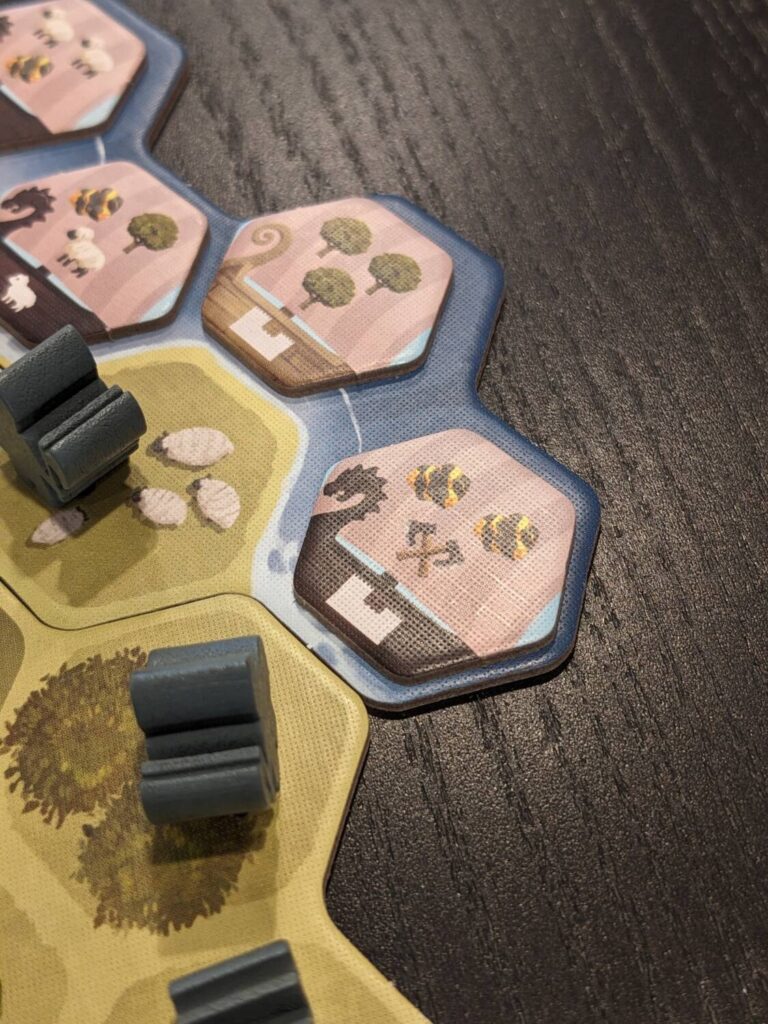
Each player’s Fjord has three tiles known as Construction Sites that have the same rules as Longships. Surround the Construction Site with the 3-5 items shown on that Site, and the Site will count towards end-game scoring. But across my three plays (one each at two, three and four players) I found that completing Construction Sites is an easy task. The Longships add bite because they change each player’s score based on the boost provided to certain elements of the scoring…but also because unfilled Longships ding that player for a negative five-point whammy when play wraps up.
Risk-reward? Press-your-luck? Strategic gambling? Yes, please. My initial findings suggest that the best Looot players will add 6-8 Longships each game. (There are only 30 Longship tiles available, so being aggressive is key.)
Two other conditions add spice to Looot: Shields and Trophies. Trophies are an axe-collection race—once per game, a player can grab one of the Trophies matching the number of axes placed anywhere in their Fjord, between 2-6 axes. The 6-axe trophy is worth 21 points, so going hard on axes is a smart play if your other Longships and Construction Sites also require axes to trigger.
Shields are once-per-game powers that break other game rules. One allows a player to place two Vikings on the same turn, while another doubles the resource production of a Viking placement. (Most of the time, our games saw players use that shield for double gold, because gold is the game’s most rare and valuable resource.) But my favorite Shield? The one that lets a player break the normal rule of one Viking per hex, by allowing a player to place their Viking on any hex occupied by an opponent.
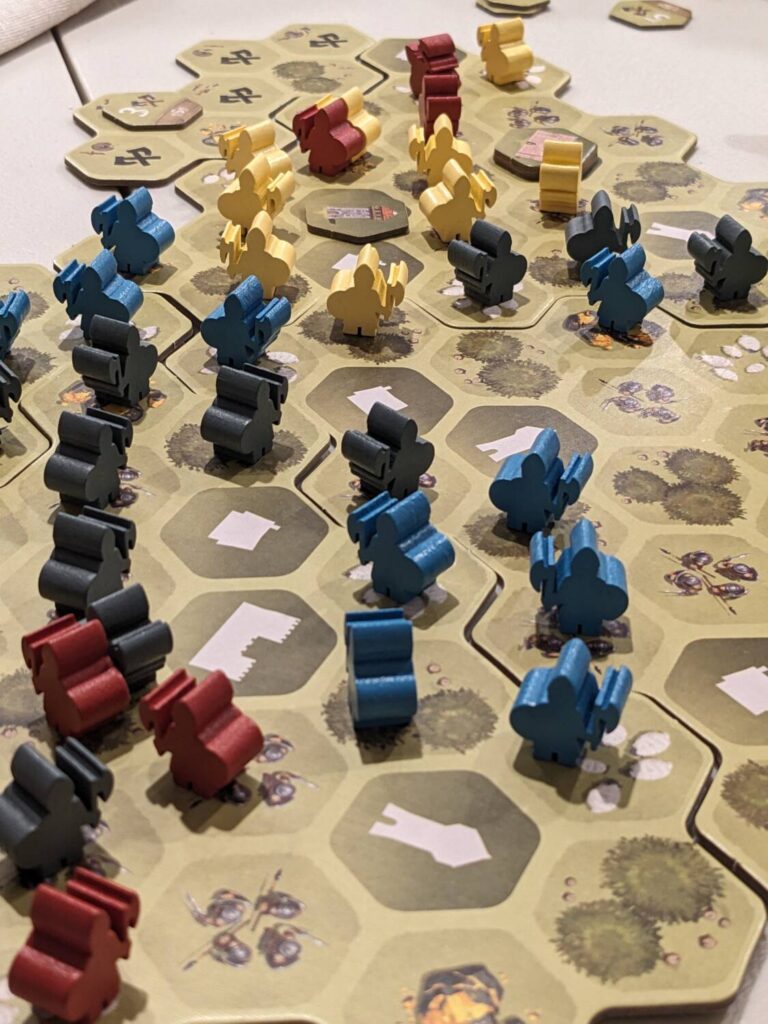
I Wish It Was Just Called “Loot”
Looot is a game that can be taught in five minutes, which is impressive in its own right. But the full games are so fast: my four-player game of Looot took 36 minutes. The game box says that each play will take about 35 minutes, so it was funny to see our time align so closely to the designer’s guesstimates.
This also means that my games with lower player counts were faster, and that’s great news. Looot doesn’t overstay its welcome, and each turn has a little more depth than I was expecting while thinking through what to do. Play begins from one edge of the board, and each turn requires a player to place their Viking adjacent to at least one other Viking, so watching the Landscape develop with Viking meeples that stretch across the game world is a nice visual treat.
The Longships are my favorite element of Looot’s design; without them, this is a standard-issue tile-laying exercise. But the Longships, once scored, boost a player’s Fjord resources and buildings by a few points each. I love using one resource to trigger multiple Longships, and figuring out that puzzle doesn’t take very long. In fact, the only time I found play to slow down just a tad was watching a player decide on which Longship to add to their Fjord. Usually, I picked based on what I already had on my map. If I had two wood resource tiles, it was easy to eyeball the market to pick a tile that had at least one wood icon (a tree) on it.
I worry that Looot can be “solved”, if that makes sense. Even after three plays, I have a strategy that I think will usually hold up—at almost any cost, I’m keeping my Vikings in one batch so that I can trigger multiple Castle captures. Gold is really valuable, because it spikes the base scoring and the best Longships all require gold. I’m almost always using my 2X Shield on gold. I’m always going to favor axes early on too, because Trophies are a race and the best Trophy (six axes) is worth a lot more points than even the four-axe Trophy, which is worth 10 points.
But the game’s possibly limited replayability is an issue for another day. For now, Looot is the kind of game I can play with both core hobbyists and my family, and have a fun time with either audience. The production does the trick without being particularly fancy, and save for a minor lack of clarity with rules regarding setup, the manual is very accessible. If the final price lands in the $25-$30 USD range, Looot is an easy recommendation.


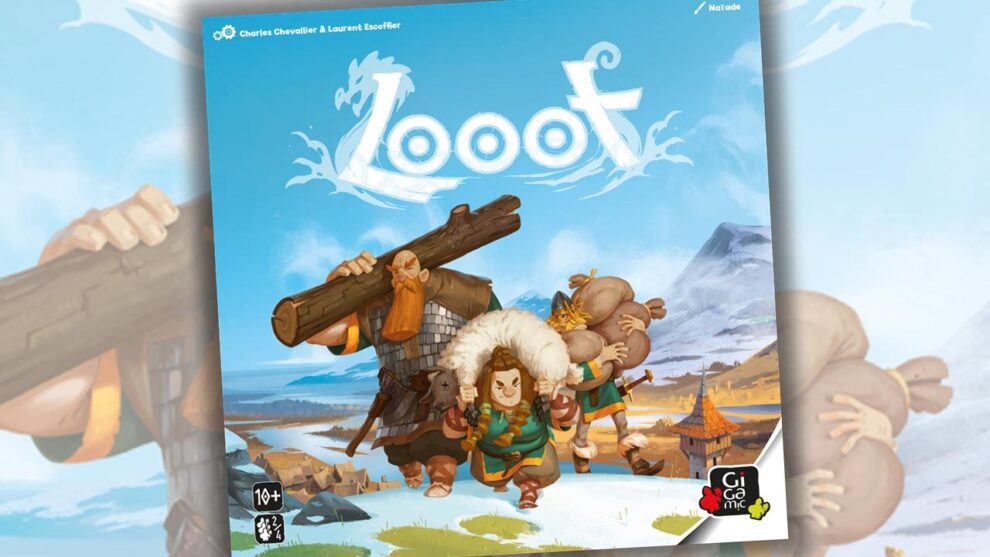
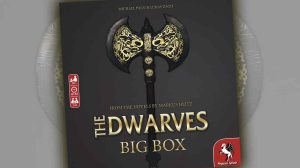
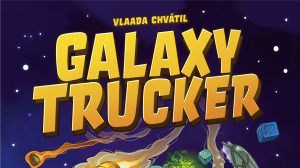

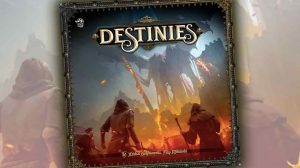




Add Comment